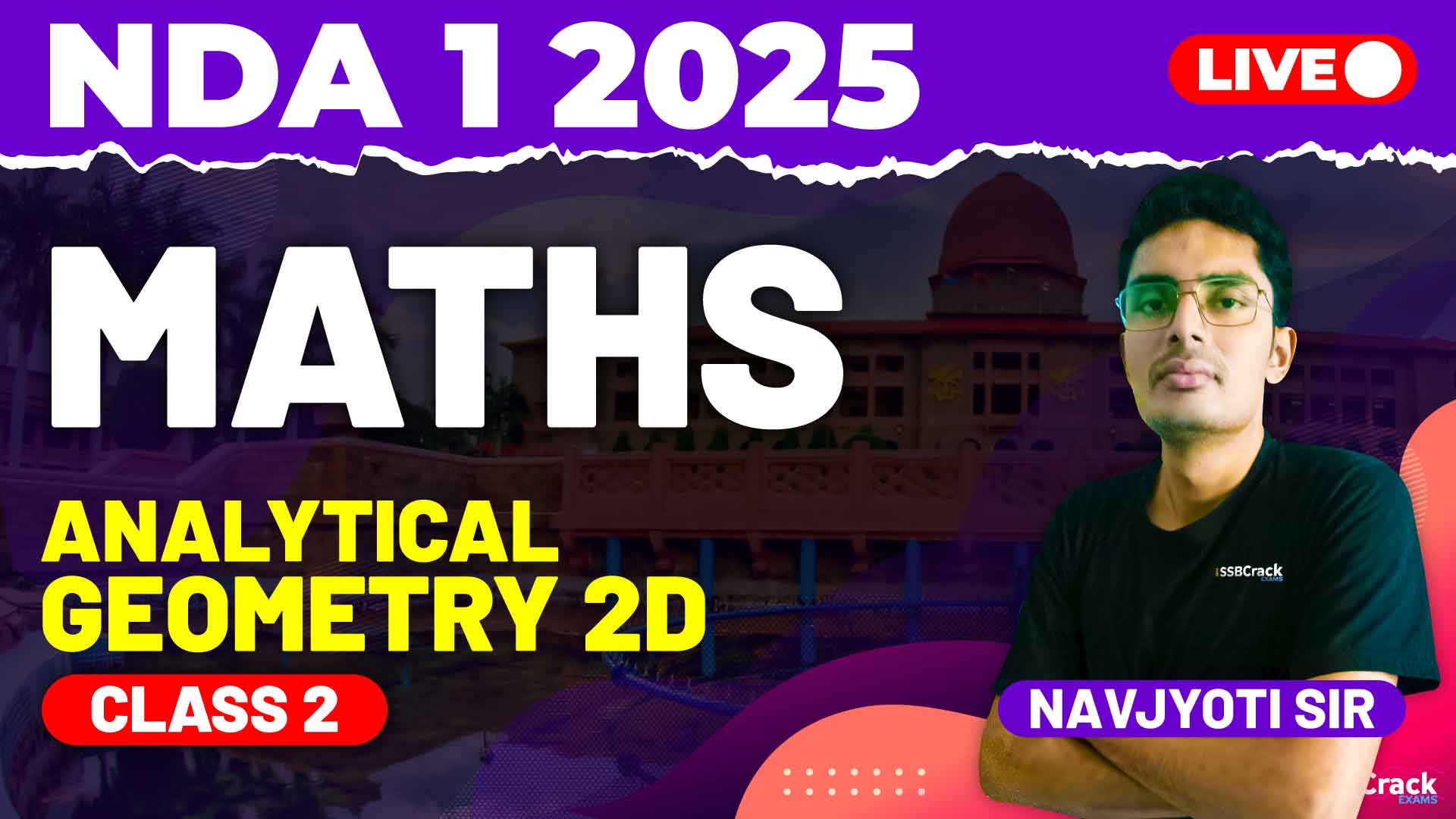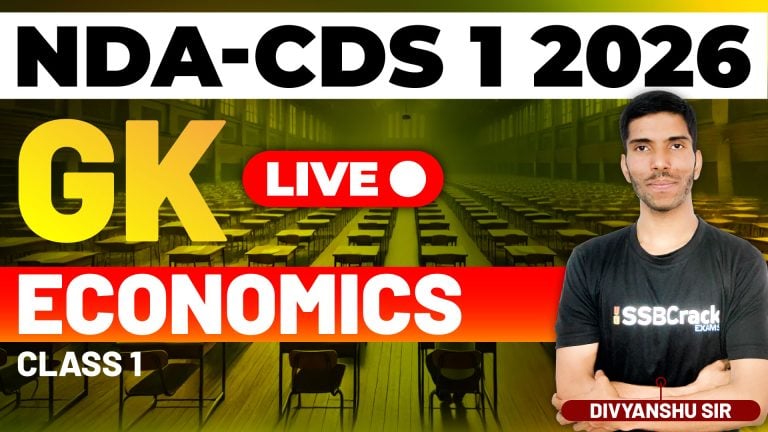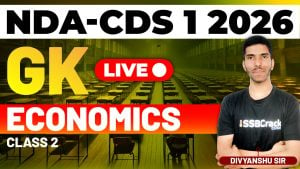A recent class on Analytical Geometry – 2D was conducted in preparation for the National Defence Academy and Naval Academy (NDA-NA) Exam – Paper I – Maths. The session revolved around the concept of Conic Sections, with particular emphasis on Circles. Conic sections are a crucial topic in geometry, and understanding them is essential for anyone preparing for the NDA-NA exam, as questions related to them are frequently asked.
In this blog, we will provide an overview of the class, discuss key concepts related to circles, and provide strategies to effectively prepare for this topic for the NDA-NA exam.
Overview of the Class: Conic Sections and Circles
The class began with a discussion of Conic Sections, a topic that deals with the curves formed by the intersection of a plane with a cone. These sections include different types of curves such as circles, ellipses, parabolas, and hyperbolas. However, the focus of this particular class was on the Circle, one of the most basic and important conic sections.
1. Introduction to Conic Sections
The instructor introduced conic sections by explaining how the plane cuts through a cone to form various curves. When the plane cuts the cone perpendicular to its axis, a circle is formed. Other conic sections—such as ellipses, parabolas, and hyperbolas—arise from different angles of intersection between the plane and the cone.
Understanding conic sections is important because they offer a unified way to study different curves, and they frequently appear in geometric problems.
2. Focus on Circles
The session then focused on the Circle, which is arguably the simplest and most well-known of all conic sections. The discussion covered the various forms of equations used to represent a circle and their respective geometric meanings. These equations are foundational, as they help describe the position and size of the circle based on the coordinates of its center and the length of its radius.
The instructor took a step-by-step approach to explain the different forms of equations for circles. These forms are useful for solving a variety of geometric problems, including finding the position of points relative to the circle, calculating distances, and determining intersections with other geometric figures. Several examples were provided to demonstrate how these equations are applied in solving real-world geometry problems.
3. Problem-Solving through MCQs
The class also focused heavily on problem-solving techniques, specifically through multiple-choice questions (MCQs). Previous years’ questions from the NDA-NA exam that dealt with circles were discussed in detail. The instructor demonstrated how to approach these problems efficiently, ensuring that students understood the logic behind each solution.
By working through these MCQs, the students gained valuable insights into how the concept of circles is tested in the exam. The importance of mastering the equations of circles was emphasized, as many questions require a solid grasp of these fundamental ideas.
Key Concepts Discussed in the Class
Several key concepts related to circles were explored during the session. These include:
1. Definition and Properties of a Circle
A circle is defined as the set of all points in a plane that are equidistant from a fixed point called the center. The distance between any point on the circle and the center is called the radius. The class thoroughly explained the significance of these basic definitions and their applications.
2. Standard Equation of a Circle
The most important part of the class was the detailed discussion of the standard equation of a circle. Understanding this form allows students to interpret and manipulate the equation to solve various geometric problems. This equation is often used to find the center, radius, and points on the circle.
3. Different Forms of the Equation of a Circle
The instructor also discussed other forms of the equation of a circle, including:
- General form
- Diameter form
- Parametric form
Each of these forms provides unique advantages depending on the type of problem being solved. The general form is particularly useful when dealing with more complex geometric figures or when circles are involved in a system of equations.
4. Intersection of Circles with Other Geometric Figures
An essential aspect of circle-related problems is the interaction of the circle with other geometric figures, such as lines or other circles. The instructor explained how to approach problems where the intersection points between a line and a circle need to be found. These kinds of problems are common in the NDA-NA exam and require a solid understanding of both straight-line geometry and circle geometry.
5. Important Geometric Relationships
The class also touched upon various important geometric relationships, such as tangents and chords in relation to circles. These relationships are important because they frequently appear in MCQs, particularly those that involve theorems related to tangents and secants of a circle.
Strategies to Prepare for Circles and Conic Sections
As circles are a key topic within Analytical Geometry, it’s essential to approach their preparation systematically. Below are some strategies that were discussed during the class and can be helpful in preparing for this topic:
1. Master the Basic Concepts First
Before diving into complex problems, ensure you have a solid understanding of the basic concepts. Make sure you’re familiar with the standard definition of a circle, its properties, and how to represent it using different forms of equations.
2. Practice Different Forms of the Circle Equation
Since questions in the NDA-NA exam can ask for different forms of the circle equation, it is crucial to be comfortable transitioning between these forms. Practice problems that require you to convert between the general and standard forms of a circle’s equation.
3. Solve Previous Years’ Questions
One of the best ways to prepare for the NDA-NA exam is by solving previous years’ MCQs. Pay close attention to the pattern of questions related to circles and conic sections. By practicing these, you’ll understand the common types of problems asked and develop the speed and accuracy needed to solve them during the exam.
4. Visualize Geometric Problems
When dealing with circles, always try to visualize the problem. Drawing diagrams or sketches can make it much easier to understand how geometric figures interact with each other. This is especially useful in problems involving the intersection of circles with lines or other circles.
5. Focus on Tangents and Secants
Problems involving tangents and secants are common in the NDA-NA exam. Make sure you are familiar with theorems related to these lines and how they interact with circles. Practice problems involving the length of tangents from a point to a circle, as these types of questions often appear in the exam.
6. Time Management
In the actual exam, managing time efficiently is crucial. While practicing, time yourself to ensure that you are able to solve problems quickly and accurately. This will help you avoid spending too much time on one question and ensure that you have enough time to attempt all questions in the exam.
Conclusion
The recent class on Analytical Geometry – 2D with a focus on Circles provided valuable insights into solving problems related to one of the most fundamental conic sections. The discussion on the various forms of the equation of a circle, its geometric properties, and problem-solving techniques using MCQs was particularly beneficial for students preparing for the NDA-NA exam.
To effectively prepare for this topic, it’s essential to master the basic definitions and equations, practice a variety of problems, and familiarize yourself with how circles interact with other geometric figures. By solving previous years’ questions and developing a structured approach to problem-solving, students can boost their confidence and performance in this key topic.
With a solid understanding of Conic Sections and Circles, candidates will be well-prepared to tackle the geometry portion of the NDA-NA exam, setting a strong foundation for success.



















